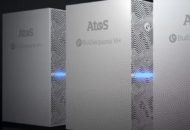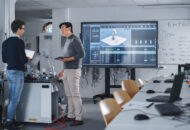Historically computers and communication networks were separate entities. Computers had special interfaces to connect them to the networks via dedicated controllers which handled the communication protocols.
IBM mainframes had their own "front-end processors" and communications was a major source of revenue for them. They failed to recognise the inevitable dominance of TCP/IP networking and the Ethernet and thus lost out to Cisco. IBM tried to get into the internal telephone exchange market when digital PABXs were introduced but they were no more successful at telephony than were AT&T at local area networking.
The Ethernet was totally unsuited to telephony and while the token ring was capable it was never cost effective. The only other networking technology which could carry both voice and data was broadband, typified by WangNet. These early efforts were referred to as "voice/data integration", but they weren’t really, they only shared the same cabling.
It is very relevant today to recognise the key factor as to why Wang failed. It was not technology but investment. There were very few corporations that were ever in a position to invest in a new local area network AND a new telephone system at the same time!
The early PCs were not powerful enough to handle the normal workload and to execute complex communication protocols and so interface cards were developed which had an on-board processor and could run the communication protocols off-loaded from the main PC processor. However as the more powerful processors became the norm simpler, cheaper interfaces could be employed. The same progress is also true for servers to a large extent, although they often use more sophisticated controllers for other reasons such as redundancy, parallel operation, etc.
The Ethernet has also progressed and gigabit LANs are common, ten times faster than the original Ethernet. The IP protocol is also now the de facto standard, even for IBM.
Modern PCs have audio capabilities as standard, both input and output. These are used for a variety of purposes, normally to do with recreation (for example recording from old long playing vinyl records and burning them to CD, first editing out clicks and scratches). However the audio facilities have been little exploited in business. A microphone and headset have been used to create a dictation type of facility, but a tape recorder proved a better idea. Better though is the attempt to implement voice recognition for such applications as natural language translation and speech recognition. Despite some good software though this is still a little used facility.
Help desk systems and those infuriating Call Management systems have been the driving force behind the integration of voice and data. It has been possible to use a simpler version of this for personal telephone applications such as initiating dialling from an address book. This is common for non-human applications such as a dial-up connection to the Internet, but not for normal telephony. The reason for this is equally clear, there is a simpler idea called a telephone! This does not mean that voice/data integration is a bad thing, but it does issue a warning about getting carried away with technology; it is important to think which applications can take advantage of it if it is available on every desktop.
A key development is the concept of IP telephones. These use the IP protocol over IP networks, including the Internet, instead of a dedicated telephone network (some IP phones can plug into an Ethernet or a phone socket, but remember how cheap simple phone handsets have become). This will work against the integration of telephony and desktop PC.< BR>
Martin Healey, pioneer development Intel-based computers en c/s-architecture. Director of a number of IT specialist companies and an Emeritus Professor of the University of Wales.





